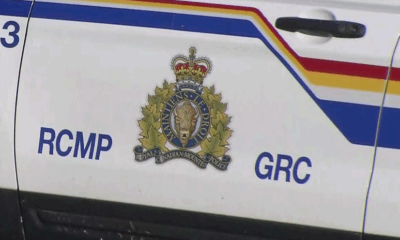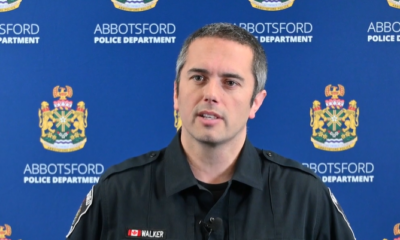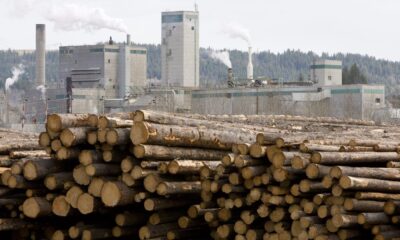Local News
TransLink unveils plan to stop overpass strikes

TransLink says it’s trying to fix a major problem on Metro Vancouver roads — trucks hitting overpasses and downing trolley wires.
The transit authority is outlining new standards for heavy trucks on Friday, and it hopes the new measures will reduce the overall number of strikes.
The plan, which is currently in the process of being fully adopted by local cities, includes:
- Standardizing the definition of “heavy truck” across most local municipalities in Metro Vancouver to vehicles with a Gross Vehicle Weight of over 11,793 kilograms.
- Aligning oversized and overweight truck standards throughout the region to make permitting more efficient for carriers.
Dave Earle, president and CEO of the BC Trucking Association, explains what the changes actually mean for the industry.
“Up until this point, we haven’t had an agreement amongst the municipalities in Metro Vancouver on what a truck is. The reason that’s important is because when you’re talking about the size and dimension of vehicles, not having a consistent definition created friction points and created inconsistencies across different municipalities,” he explained.
“We talk about interprovincial trade barriers — we had barriers between municipalities in Metro Vancouver.”
TransLink says it’s also developing a new permit manual for oversized and overweight trucks.
“Trucking companies have to apply for permits because they’re oversized. Well, oversized from what? And that’s the first definition, that first place of, ‘What is actually a truck, and how do we go about this?’ explained Earle.
“When you’re driving around the Lower Mainland, they’ll see different signs and different sizes, vehicles over X weight or this weight or that weight, that needs to change so the vehicles that are running know exactly that they can move throughout the region without having to take different routes and skip different municipalities.”
Currently, once trucks are granted a provincial permit, they can only stick to certain routes to move goods — but this development changes that.
“It also creates some certainty for citizens, knowing where trucks can be. Trucks are allowed to move on any road as long as it’s a major arterial road, a designated truck route, or it’s the most direct route to where they’re going. Many people don’t actually live on major routes, so to get things, trucks have to move through local streets. That’s why weights and dimensions are so important, so we know what’s moving where and that we can have it all move seamlessly,” Earle told 1130 NewsRadio.
Earle admits that despite the goal of trying to reduce overpass strikes, there’s no guarantee anything will actually change right away.
“While this may help begin to address the conversation, we are a ways away from trying to address overpass strikes. What we’re talking about there is trucks that are oversized — infrastructure in different places is smaller and lower than it needs to be for moving loads of today’s dimensions, but the law has to change,” he said.
“While we’re hopeful… I can’t give you an assurance it’s going to make a difference tomorrow morning.”
He says drivers will see some road signs change across Metro Vancouver.
“It will depend on what the municipality has because some are already in line with these standards. But, where they don’t, and you see different numbers and different values, then yes. I see signs that I think are written in size 14 font, detailing the bylaw that applies — we need to get away from that. We need to be clear and concise.”
TransLink is taking the lead on this, as opposed to the Ministry of Transportation, because it’s responsible for the Major Road Network (MRN), meaning in addition to providing transit services, it also operates major roads, bridges, and maintenance needs.
Fines will remain the same for any carrier that hits an overpass, despite these changes, Earle explains.
“When you look at these different definitions and they get down into these very, very minuscule technical issues from time to time, and you’ll see law enforcement t… they’ll try to enforce these, but it’s very inconsistent and it’s tough to get there. Often, it’s a discussion roadside that leads to some type of agreement. All that has got to change.”
Another reason this is being addressed is because of ongoing pressure from the U.S., which is taking a toll on the economy.
“There’s a lot more appetite to have these conversations now because we’re focused on the economy and trade and the importance of economic development,” Earle said.
While the new rules are in the process of being greenlit by Metro Vancouver municipalities, Earle expects the Fraser Valley will follow suit.
Ministry of Transportation numbers show there have already been at least a dozen overpass collisions so far in 2025.
You can watch The Leader Spirit 24/7 live or listen live to 1130 NewsRadio Vancouver to keep up to date with this story. You can also subscribe to breaking news alerts sent directly to your inbox.












